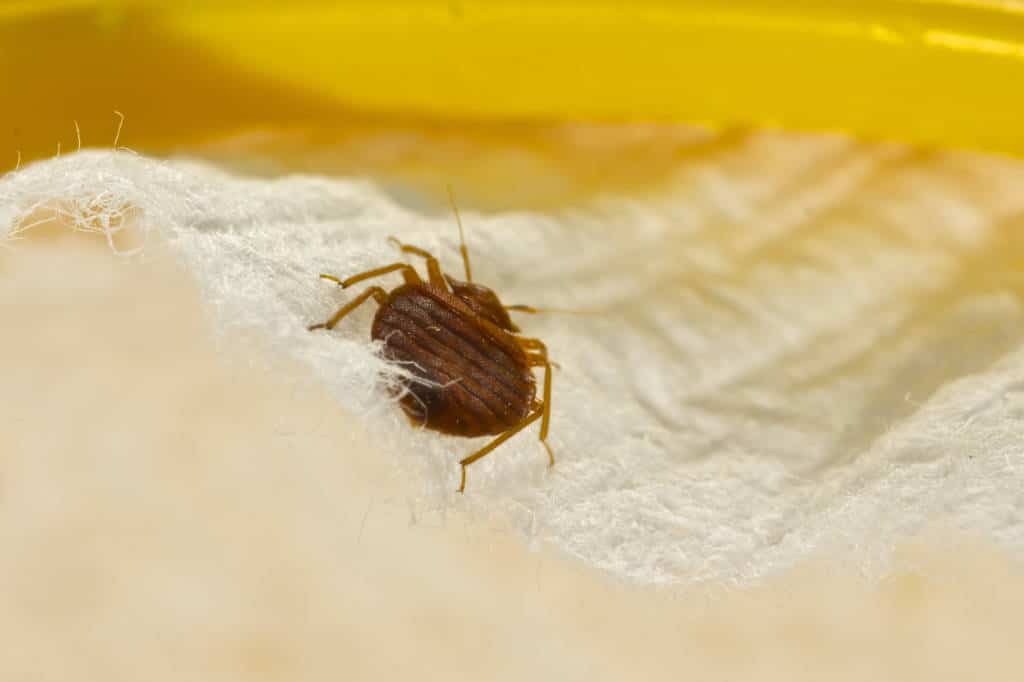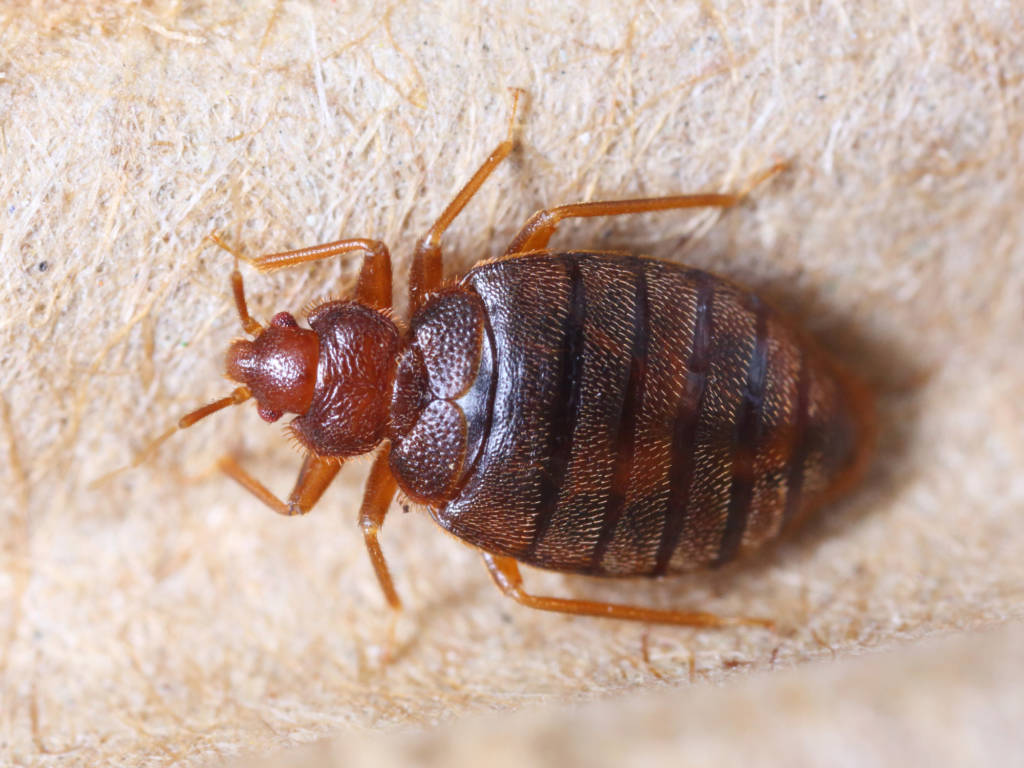
A new report conducted by the National Pest Management Association (NPMA) and the University of Kentucky has found that bed bug infestations in the United States are growing at high rates.
The report also stated that a third of pest-management companies treated bedbug infestations in hospitals in 2018, 6% more than the year before, and more than twice as many as in 2012.
The percentage of exterminators dealing with bed bugs in nursing homes has also almost doubled since 2018, to 46%. Bed bug experts also reported seeing them in ambulances, and 99.6 percent of study respondents claimed to have encountered bed bug infestations in the past year.
The top identified bed bug infestation locations were:
- Hotels/motels – 75 percent (80 percent in 2011)
- College dorms – 47 percent (54 percent in 2011)
- Nursing homes – 46 percent (46 percent in 2011)
- Office buildings – 36 percent (38 percent in 2011)
- Schools and daycare centers – 41 percent (36 percent in 2011)
- Hospitals – 33 percent (31 percent in 2011)
- Transportation (train/bus/taxi) – 21 percent (18 percent in 2011)
- Movie theaters – 10 percent (17 percent in 2011)
- Retail stores – 15 percent (21 percent in 2011)
- Libraries – 12 percent (8 percent in 2011)
RELATED: Natural Bug Repellent Recipes
Bed Bug Facts You Should Know
- The peak time for feeding is between midnight and 5 AM. Hungry bedbugs will try to feed at any time, but they do not like the sunlight and prefer the dark. One feed will take between 5 and 10 minutes. The bug will then return to its hiding place.
- Bedbugs will feed every 5 to 10 days. They can, however, last for about 70 days without feeding. A well-fed bedbug has a lifespan of several months.
- They find their host by seeking out human body heat and sensing the presence of carbon dioxide on the breath.
- A bedbug will pierce the skin of its host with its mouth part. It first injects saliva that is a mixture of an anesthetic, so that the host feels nothing, and an anticoagulant so that the blood flows out freely. It then sucks out blood until it is full.
The bites are not noticeable until after the skin reaction has occurred. According to the Centers for Disease Control and Prevention (CDC), it can take up to14 days for bites to appear.
- Bedbugs can only reproduce when they have reached maturity. A female bedbug lays approximately seven eggs in a day and hundreds during her lifetime.

How To Get Rid Of Bed Bugs
Make sure you really have bed bugs, not fleas, ticks, or other insects
Don't panic. You can compare your insect to the pictures on our Identifying bed bugs Web page or show it to your local extension agent. (Extension agents are trained in pest control issues and know your local area.)
Kill bed bugs with heat, but be very careful.
Raising the indoor temperature with the thermostat or space heaters won’t do the job. Special equipment and very high temperatures are necessary for successful heat treatment.
Black plastic bags in the sun might work to kill bed bugs in luggage or small items if the contents become hot enough. Bed bugs die when their body temperatures reach 45°C (113°F).
To kill bed bugs with heat, the room or container must be even hotter to ensure sustained heat reaches the bugs no matter where they are hiding.
Stop Them From Travelling
When traveling, avoid putting luggage on the bed to reduce the risk of bringing bedbugs home in a suitcase.
It is also worth vacuuming any luggage after you return home and making sure you get rid of the contents of the vacuum in a tightly sealed bag. Dispose of this bag in a trash can outside.
Separate travel clothes from laundry and immediately wash them in hot water.
Don't immediately reach for the spray can.
Be comprehensive in your approach. Try other things first. If pesticides are needed, always follow label directions or hire a professional. There is help available to learn about treatment options.
Reduce the number of hiding places -- Clean up the clutter.
A cluttered home provides more places for bed bugs to hide and makes locating and treating them harder.
If bed bugs are in your mattress, using special bed bug covers (encasements) on your mattress and box springs makes it harder for bed bugs to get to you while you sleep.
Leave the encasements on for a year. Be sure to buy a product that has been tested for bed bugs and is strong enough to last for the full year without tearing.
So what about BEFORE you find bedbugs? What if you suspect that they are lurking somewhere, but you haven't seen them yet?
Signs of Infestation
If you wake up with itchy areas you didn't have when you went to sleep, you may have bedbugs, particularly if youhave a used bed or other used furniture around the time the bites started. Other signs that you have bedbugs include:
- Bloodstains on your sheets or pillowcases
- Dark or rusty spots of bedbug excrement on sheets and mattresses, bedclothes, and walls
- Bedbug fecal spots, eggshells, or shed skins in areas where bedbugs hide
- Musty odor (that's a sign of the bugs' scent glands)
If you suspect an infestation, remove all bedding and check it carefully for signs of the bugs or their excrement. Remove the dust cover over the bottom of the box springs and examine the seams in the wood framing. Peel back the fabric where it is stapled to the wood frame.
Also, check the area around the bed, including inside books, telephones or radios, the edge of the carpet, and even in electrical outlets.
Check your closet, because bedbugs can attach to clothing. If you are uncertain about signs of bedbugs, call an exterminator, who will know what to look for.
But what if you end up getting bitten by a bed bug?
A bed bug bite affects each person differently. Bite responses can range from an absence of any physical signs of the bite to a small bite mark to a serious allergic reaction.
Bed bugs are not considered to be dangerous; however, an allergic reaction to several bites may need medical attention.
It is hard to tell if you’ve been bitten by a bed bug unless you find bed bugs or signs of infestation. When bed bugs bite, they inject an anesthetic and an anticoagulant that prevents a person from realizing they are being bitten.
Most people do not realize they have been bitten until bite marks appear anywhere from one to several days after the initial bite. The bite marks are similar to that of a mosquito or a flea — a slightly swollen and red area that may itch and be irritating. The bite marks may be random or appear in a straight line. Other symptoms of bed bug bites include insomnia, anxiety, and skin problems that arise from profuse scratching of the bites.
Because bed bug bites affect everyone differently, some people may not react and will not develop bite marks or any other visible signs of being bitten.
Other people may be allergic to bed bugs and can react adversely to the bites. These allergic symptoms can include enlarged bite marks, painful swellings at the bite site, and, on rare occasions, anaphylaxis.
Bedbugs bite and suck blood from humans. Bedbugs are most active at night and bite any exposed areas of skin while an individual is sleeping.
The face, neck, hands, and arms are common sites for bedbug bites. The bite itself is painless and is not noticed. Small, flat, or raised bumps on the skin are the most common signs; redness, swelling, and itching also commonly occur.
If scratched, the bite areas can become infected. A peculiarity of bedbug bites is the tendency to find several bites lined up in a row that may appear as itchy welts after scratching.
Infectious disease specialists refer to this series of bites as the "breakfast, lunch, and dinner" sign, signifying the sequential feeding that occurs from site to site. In some people, the bites can take several days to develop. The signs may become apparent up to 14 days after the bite has occurred.
Bedbug bites may go unnoticed or be mistaken for flea or mosquito bites or other types of rash or skin conditions since the signs of bedbug bites are difficult to distinguish from other bites or skin conditions.
Bedbugs also have glands whose secretions may leave musty odors, and they also may leave dark fecal spots on bed sheets and around places where they hide (in crevices or protected areas around the bed or anywhere in the room).








